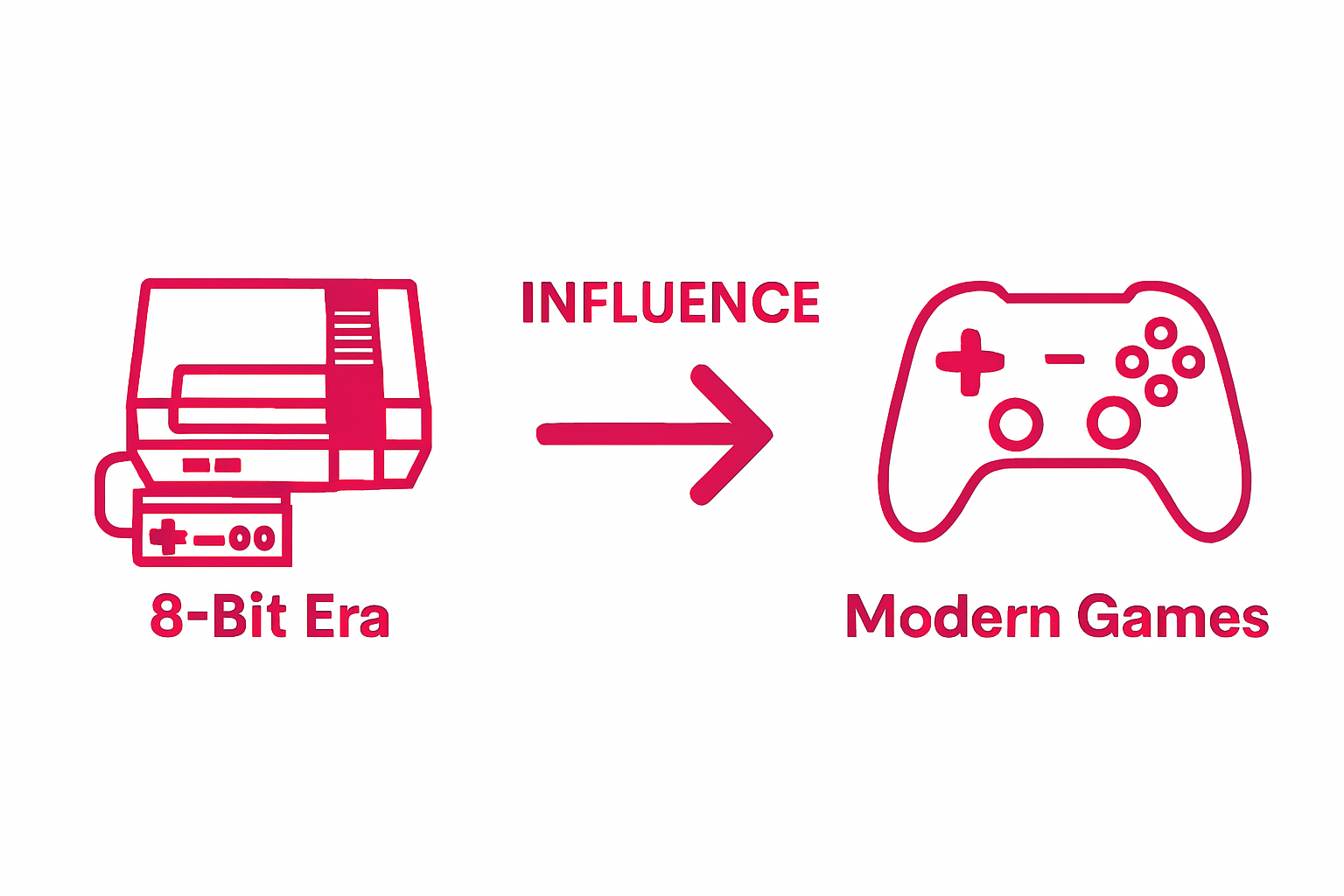
Understanding NES Classic Games: A Nostalgic Journey
Share
NES classic games changed the way the world interacted with digital entertainment. Over 61 million NES consoles were sold worldwide in the 1980s and 1990s, making it one of the best-selling systems ever. Most people remember Mario and Zelda for the nostalgia, but the real surprise is how these simple pixel adventures are still setting the rules for modern gaming decades later.
Table of Contents
- What Are NES Classic Games And Their Origins?
- Why NES Classic Games Matter To Gaming Culture
- How NES Classic Games Function And Their Design
- Key Concepts And Features Of NES Classic Games
- The Cultural Impact Of NES Classic Games Today
Quick Summary
| Takeaway | Explanation |
|---|---|
| NES games pioneered gaming mechanics. | These classic games introduced fundamental gameplay principles still used in modern titles. |
| Gameplay challenges require player skill. | NES games were designed to be difficult, demanding precision and strategic thinking from players. |
| Cultural memories link generations. | NES classic games serve as nostalgic touchstones connecting players across different age groups. |
| Limited technology sparked creativity. | Developers turned technological constraints into opportunities for innovative and engaging game design. |
| Influential in modern game design. | The design philosophies from NES games continue to inspire current game developers and creatives across various industries. |
What Are NES Classic Games and Their Origins?
NES classic games represent more than just vintage entertainment - they are foundational digital artifacts that transformed interactive entertainment worldwide. These games, originating from the Nintendo Entertainment System released in the 1980s, pioneered fundamental gaming mechanics and storytelling techniques that continue to influence modern video game design.
The Birth of a Gaming Revolution
In research from MyBroadband, Nintendo’s first major home video game console marked a critical turning point in digital entertainment. The NES introduced groundbreaking titles that would become global cultural phenomena, including Super Mario Bros., The Legend of Zelda, and Metroid. These games established core gameplay principles that remain relevant decades later.
Key characteristics of NES classic games include:
- Pixel-based graphics with limited color palettes
- Challenging gameplay mechanics requiring precise player skills
- Innovative narrative structures within technological constraints
- Memorable character designs that became global icons
Understanding NES Game Design Philosophy
NES games emerged during a period of significant technological limitation, which paradoxically sparked extraordinary creativity. Developers worked with extremely restricted memory and processing capabilities, forcing them to design games that were simultaneously simple and profoundly engaging. Check out our guide on classic gaming consoles to explore how these technological constraints shaped game design.
The 8-bit era represented more than just entertainment - it was a transformative period where interactive digital experiences transitioned from niche hobby to mainstream cultural phenomenon. NES classic games captured players imagination by offering immersive worlds and challenging gameplay experiences that transcended the technological limitations of their time.
Why NES Classic Games Matter to Gaming Culture
NES classic games transcend mere entertainment, representing a pivotal moment in digital storytelling and interactive experience design. These games fundamentally transformed how society perceives and engages with interactive digital media, establishing foundational narratives and gameplay mechanics that continue to inspire contemporary game developers.
Cultural and Psychological Impact
Research from social psychology studies reveals that classic video games like those from the NES era profoundly influence collective memory and generational identity. They serve as powerful nostalgic anchors, connecting players across different age groups through shared digital experiences.
Key cultural contributions of NES classic games include:
- Creating universal character archetypes like Mario and Link
- Establishing gameplay mechanics still used in modern video games
- Democratizing interactive entertainment across diverse demographics
- Introducing complex narrative structures within technological constraints
Technological and Creative Legacy
The limitations of 8-bit technology paradoxically sparked unprecedented creativity among game designers. Developers were forced to craft compelling experiences using minimal graphical and computational resources, leading to innovative design principles that prioritized gameplay depth over visual complexity. Explore our guide on retro gaming consoles to understand how these constraints shaped interactive entertainment.
Moreover, NES classic games represent a critical evolutionary stage in digital storytelling. They transformed video games from simple pixelated diversions into immersive narrative experiences that could evoke genuine emotional responses. By bridging technological limitation with imaginative design, these games established a blueprint for interactive entertainment that continues to influence game design decades later.
To better understand how NES classic games have shaped both technology and creative design, here is a comparison of the key impacts mentioned throughout the article.
| Area of Impact | Description |
|---|---|
| Cultural Legacy | Connected generations through nostalgia and shared experiences |
| Technological Innovation | Forced designers to maximise limited hardware, leading to efficient programming and clever design |
| Gameplay Philosophy | Focused on precise control, skill, and challenging but rewarding gameplay |
| Narrative Techniques | Used minimal graphics and text to convey rich stories and create memorable icons |
| Influence on Modern Gaming | Established principles and mechanics still visible in today’s games and creative industries |
How NES Classic Games Function and Their Design
NES classic games represent a remarkable intersection of technological constraint and creative innovation, embodying a unique approach to interactive digital experiences that transcended the limited hardware capabilities of their era. Understanding their function requires exploring the intricate relationship between hardware limitations and ingenious game design strategies.
Technical Architecture and Constraints
Research from computational design studies reveals the extraordinary challenges faced by game developers working with 8-bit systems. The Nintendo Entertainment System operated with a mere 2 kilobytes of working RAM, forcing developers to create complex gameplay experiences within incredibly restrictive memory environments.
Key technical characteristics of NES game design included:
- Utilizing sophisticated programming techniques to maximize limited memory
- Implementing sprite-based graphics with strict color palette restrictions
- Creating complex gameplay mechanics through minimal computational resources
- Developing innovative memory management strategies
Game Mechanics and Design Philosophy
NES game designers developed unique strategies to create engaging experiences despite significant technological limitations. They pioneered techniques like sprite recycling, where graphical elements were dynamically reused to create the illusion of more complex visual environments. Check out our collection of retro Nintendo consoles to appreciate the evolution of gaming technology.
The design philosophy centered on creating gameplay that was simultaneously challenging and rewarding. Developers focused on precise control mechanics, introducing concepts like pixel-perfect jumping and intricate enemy movement patterns that required players to develop significant skill and muscle memory. These design principles transformed technological constraints into opportunities for creating deeply interactive and memorable gaming experiences.
The main technical and gameplay characteristics of NES classic games can be organised in the following table for easy reference.
| Characteristic | Technical Aspect | Gameplay/Design Aspect |
|---|---|---|
| Memory Limitations | 2KB of RAM, minimal computational resources | Forces simple yet engaging mechanics |
| Graphics | Sprite-based, restricted colour palettes | Memorable character designs, pixel art style |
| Programming Techniques | Sprite recycling, memory management strategies | Creative and complex gameplay in simple framework |
| Control Precision | Hardware limited in input types | Demanded skill and muscle memory from players |
| Narrative Approaches | Minimal text and graphics | Iconic storytelling within technical constraints |
Key Concepts and Features of NES Classic Games
NES classic games represented a groundbreaking paradigm in interactive entertainment, introducing sophisticated design principles that would fundamentally reshape video game development for generations. These games were not merely digital experiences, but complex systems of player interaction, challenge, and storytelling compressed into incredibly limited technological frameworks.
Gameplay Mechanics and Design Principles
Research exploring Nintendo’s design philosophy reveals the intricate approach developers used to create engaging experiences. The concept of ‘Nintendo hard’ emerged during this era, describing games deliberately designed with extreme difficulty levels that demanded precision, strategy, and repeated player learning.
Critical gameplay features of NES classic games included:

- Consistent reward structures for player skill and persistence
- Intricate level design requiring strategic navigation
- Limited but meaningful player progression systems
- Precise control mechanics demanding muscle memory
Technological and Narrative Innovation
NES game designers pioneered narrative techniques that transcended visual limitations. They developed storytelling strategies that communicated complex narratives through minimal graphical and textual resources. Characters like Mario and Link became cultural icons through carefully crafted visual design and gameplay interactions that suggested rich backstories.
Explore our guide on classic Nintendo games to understand how these innovative design principles continue to influence modern game development. The NES era demonstrated that technological constraints could spark extraordinary creativity, transforming limited hardware into platforms for imaginative, deeply engaging interactive experiences that continue to captivate players decades after their initial release.
The Cultural Impact of NES Classic Games Today
NES classic games have transcended their original technological context, evolving from simple entertainment into profound cultural artifacts that continue to shape digital media, artistic expression, and intergenerational social connections. Their enduring legacy extends far beyond nostalgic reminiscence, influencing contemporary creative industries and social interactions.

Generational Cultural Memory
Research from cultural studies demonstrates how NES games function as powerful repositories of collective memory. These games represent more than interactive experiences they are living historical documents that communicate the technological and creative aspirations of an entire generation.
Key cultural preservation aspects include:
- Documenting technological evolution through interactive media
- Maintaining narrative traditions of early digital storytelling
- Providing historical context for contemporary game design
- Representing early digital artistic expressions
Contemporary Creative Influence
Modern game designers, artists, and multimedia creators consistently reference NES game mechanics and aesthetic principles. The minimalist design philosophy pioneered by NES developers continues to inspire creative professionals across various disciplines, from graphic design to interactive media production.
Explore our guide on classic Nintendo games to understand how these vintage games continue to shape contemporary creative thinking. By preserving and celebrating these digital artifacts, we acknowledge their profound role in documenting technological innovation and cultural transformation, ensuring that the creative spirit of the NES era remains vibrant and relevant in our rapidly evolving digital landscape.
Experience Your NES Nostalgia with the Perfect Retro Finds
Rediscovering the magic of NES classic games brings powerful memories of a time when gaming was new, exciting, and endlessly creative. If reading about pixel art, iconic controls, and challenging gameplay has you craving that authentic vintage vibe, we know exactly how it feels to want more than just memories. Finding the right retro-themed technology to complement your love for classic games can be tricky, especially if you want style, functionality, and a bit of personal history all in one place.
At OnlyRetro, you do not have to settle for ordinary. Explore our curated range of retro-inspired tech gadgets, gaming consoles, and lifestyle accessories. Every product is chosen with your nostalgia and passion for the classics in mind. If you are ready to relive the golden age of gaming and give your home or setup an authentic vintage touch, shop our iconic collection today. Make the most of your NES memories now and discover the best in retro tech before those rare finds disappear.
Frequently Asked Questions
What are NES classic games?
NES classic games are vintage video games from the Nintendo Entertainment System, released in the 1980s. These games revolutionized interactive entertainment with titles like Super Mario Bros. and The Legend of Zelda, establishing core gameplay principles that persist today.
How did NES classic games influence modern gaming?
NES classic games set the foundation for modern gaming by popularizing key gameplay mechanics, character designs, and narrative structures that are still used in contemporary video games. They represent a critical evolution in how digital storytelling is approached in the industry.
What challenges did developers face when creating NES classic games?
Developers had to work within significant technological constraints, such as limited RAM and processing power. This led to innovative design strategies, such as sprite recycling and sophisticated programming techniques, which prioritized gameplay depth over visual complexity.
Why are NES classic games still relevant today?
NES classic games are considered cultural artifacts that preserve the history of digital media and interactive storytelling. Their nostalgic value connects players of different generations, while their design principles continue to inspire modern game developers and creative industries.